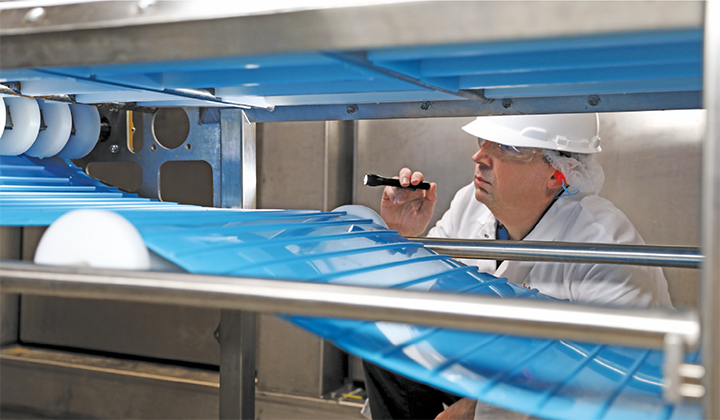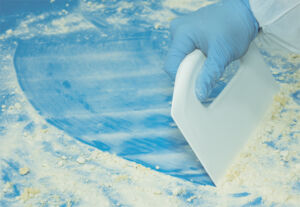
Conveyor systems work under demanding conditions in bakeries. Maintaining them in top shape is the first step to efficiency in production; upgrades will then guarantee optimum performance in handling processes for truly competitive-level manufacturing.
Maintenance-free systems
The main factor that reduces the belt life is tensioning, often leading to mistracking of the belt, Hans Tertoolen, Intralox Bakery Account Manager, explains: “Mistracking also leads to fraying of the sides of the belt, which increases the risk of foreign material contamination. Tensioning not only means wearing out the belt, but it also leads to excessive wear of shafts and bearings.” Since all Intralox modular and flat top ThermoDrive belts are not tensioned, the belt itself and the components last much longer. Moreover, since there is no risk of mistracking of the belt, contamination risk is reduced to a minimum. He highlights, “Since our belts are not tensioned and do not need to be tracked, maintenance is reduced to an absolute minimum, with shafts and bearings now also lasting much longer.”
Luis Patricio, Intralox Baking Account Manager, also weighs in: “Intralox conveyor design guidelines are critical to ensure the ThermoDrive belting technology works under optimum conditions.” This means avoiding excess dough in critical areas and ensuring that cleaning is performed with minimum effort and time. “The accumulation of dough on the belt surface, return way and outfeed areas can become very critical on the mechanical aspects, as well as regarding food safety; therefore, the relevance of respecting Intralox design guidelines,” Patricio recommends.


Proofing is the task
To ensure pan control while proofing, Intralox has belts with integrated magnets to keep maximum control of pans and baking trays, also in case of inclines and declines. “In case of aluminum pans and trays, we have an alternative with friction top belts (rubber surface on top for maximum friction with the pans/trays),” illustrates Tertoolen.
The company’s spiral technology Direct Drive will ensure a smooth operation of the system, thanks to its positive drive and zero friction between drum and belt. “Its unique feature contributes to a very stable proofing process without damaging the dough due to the excess of micro-vibrations between the drum and the spiral belt,” adds Patricio. The same applies when the proofing is done on Direct Drive spiral with metal trays: the reduced amount of vibrations on the system will ensure the trays complete the cycle without losing their orientation, ensuring a stable proofing cycle without affecting the dough.
Hygienic design
The hygienic design represents the first step in effective cleaning, in all processes. To guarantee sanitation upkeep, Intralox recommends the 7-step-of-Dry Sanitation-Guidelines that describe a sequenced approach to effective and efficient cleaning. Another key aspect in cleaning and preparing the conveyor for safe manufacturing is “Using the right tools, color-coded and hygienically designed to prevent cross-contamination during the sanitation process,” explains Roger Scheffler, Food Safety Specialist at Commercial Food Sanitation, an Intralox company.
Maintenance is the first necessary step towards preserving efficiency; upgrades will be the goal for significant, quantifiable improvements, from single-feature innovations to those revising the operating concept altogether. These will be detailed in the second part of this article.


